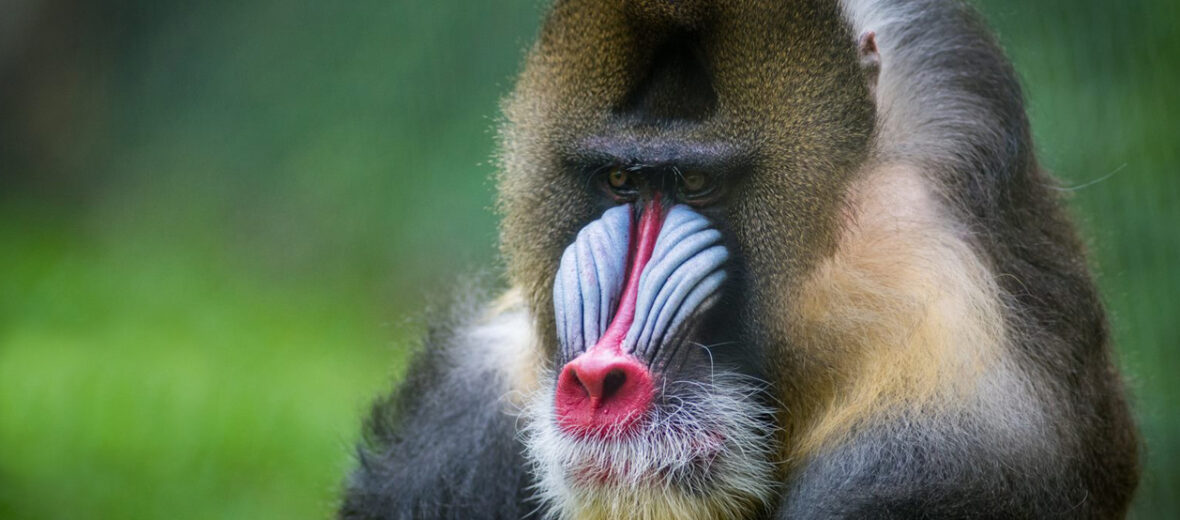
The mandrill, aka forest baboon, is not only the largest but the most colorful of the Old World monkeys. Not only is their face colorful, but so is their butt. They’re colorful from top to… bottom. These critters prefer the rainforest biome of central and western Africa. Due to habitat destruction, hunting, and climate change, these magnificent beasts are listed as Vulnerable. Their populations are also decreasing each day.
First the Stats…
Scientific name: Mandrillus sphinx
Weight: Up to 82 lbs.
Length: Up to 3.1 feet
Height: Up to 2.1 feet
Lifespan: Up to 40 years
Now on to the Facts!
1.) Mandrills are sexually dimorphic, in that males look notably different than females. Males are larger and have a brighter coloration.
2.) Mixed groups of up to 40 individuals can sometimes come together to create troops of over 600!
3.) They have cheek pouches used for storing food for eating later.
4.) Rafiki in Disney’s “The Lion King” is called a baboon. But he is actually a mandrill. Oops.
5.) These monkeys are omnivorous (eat plant and animal matter) and consume fruit, fungi, roots, grass, eggs, insects, worms, frogs, lizards, snakes, and small vertebrates.
But wait, there’s more on the mandrill!
6.) Troops are patriarchal (led by a dominant male).
7.) They patrol an area of around 30 square miles.
Did you know…?
Those long canine teeth can get as long as 2.5 inches! They are exposed as a greeting gesture and are also used in self-defense.
8.) Like other monkeys, mandrills are diurnal (active during the day).
9.) A group of mandrills is called a troop, tribe, cartload, barrel, or wilderness.
10.) The primary predators of the mandrill are leopards, chimpanzees, snakes, eagles, and humans.
But wait, there’s still more on the mandrill!
11.) Females have a gestation (pregnancy) of up to 182 days.
12.) The female will birth a single infant. On rare occasions 2 (and sometimes twins) are born.
Did you know…?
The biggest gathering of mandrills ever recorded was in Lopé National Park, Gabon. It contained 1,300 individuals!
13.) Mandrill males are polygynous (a single dominant male mates with a harem of females).
14.) Mating takes place from July – October and females will mate every 2 years.
15.) The newborn infant is cared for and protected by its mother as well as other females of the troop like aunts, sisters, and even cousins.
Now a Short Mandrill Video!
Be sure to share & comment below! Also, check out the Critter Science YouTube channel. Videos added frequently!
Want to suggest a critter for me to write about? Let me know here.



